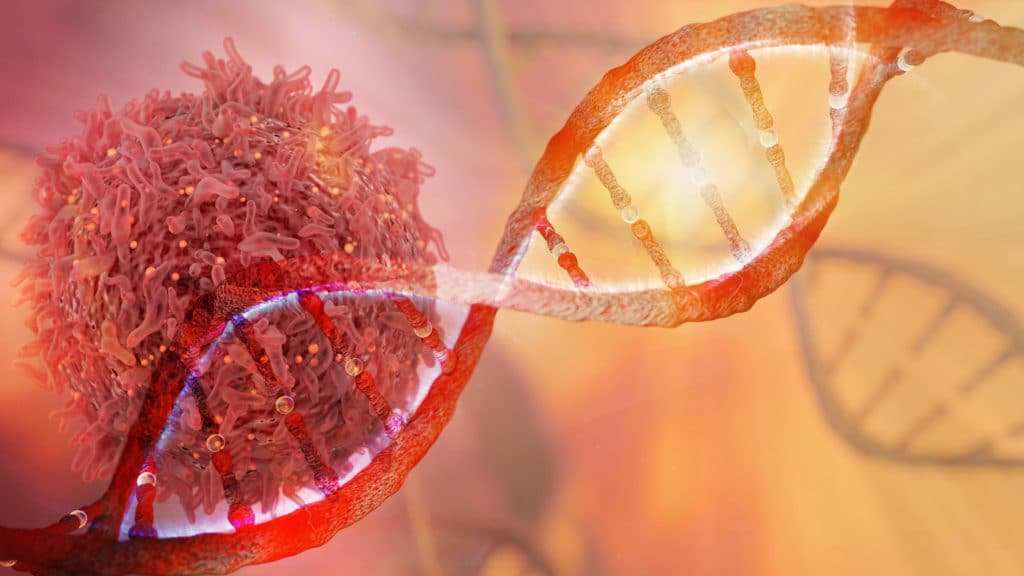Invasive ductal carcinoma (IDC) is a type of breast cancer that originates in a milk duct and invades the surrounding fibrous or fatty tissue of the breast. From there, it has the potential to spread to other organs in the body.
How Common is Invasive Ductal Carcinoma?
Invasive ductal carcinoma accounts for around 80 percent of all breast cancer diagnoses. It is also the most common type of breast cancer that affects men.
What are the Symptoms of Invasive Ductal Carcinoma?
Some patients diagnosed with IDC may not present with any symptoms. When symptoms are present, they may include:
- A new lump in the breast, or armpit area
- A change in breast size or shape
- Changes to the nipple, such as sores or crusting, an ulcer or inverted nipple
- Clear or bloody nipple discharge
- Changes to the skin including redness, puckering, or dimpling (an ‘orange peel’ appearance)
- Breast tenderness or pain
How is Invasive Ductal Carcinoma Diagnosed?
Invasive ductal carcinoma is diagnosed through a combination of a physical exam, imaging tests like mammogram and ultrasound, and a biopsy where a small tissue sample is examined for cancer cells. This help doctors confirm the presence of cancer and plan the best treatment.
How is Invasive Ductal Carcinoma Treated?
The treatment of IDC depends on the stage of the cancer and the characteristics of the tumour, including its size, location, spread, and type. Treatment options may include a combination of radiation therapy, chemotherapy, hormone therapy, and/or surgery.
What are my chances of Survival (prognosis) if I am Diagnosed with Invasive Ductal Carcinoma?
In Australia and New Zealand, survival rates for invasive ductal carcinoma have improved thanks to advancements in clinical trials research, which have led to more tailored and advanced treatments, prevention strategies, and screening techniques.
However, for some people, their breast cancer will progress to an advanced or metastatic stage which greatly reduces their chances of survival.
Factors such as age, stage of disease, and tumour type can impact the likelihood of surviving five years past a breast cancer diagnosis.
Overall, the five-year survival rate for women diagnosed with breast cancer is 91.5%, and 86.4% for men.
FAQ’s
How Serious is Invasive Ductal Carcinoma?
Invasive ductal carcinoma is a serious form of breast cancer, as it has the potential to spread beyond the milk ducts where it originates. The seriousness of IDC largely depends on the grade of the cancer and the stage at which it is diagnosed. Early detection and appropriate treatment are crucial for a better prognosis.
Is Invasive Breast Cancer Aggressive?
Yes, invasive breast cancer, including invasive ductal carcinoma, is considered aggressive because it can invade surrounding tissues and spread to other parts of the body. The level of aggressiveness can vary depending on the grade of the cancer, with invasive ductal carcinoma grade 3 being more aggressive compared to grade 1.
What is the Difference Between DCIS and Invasive Ductal Carcinoma?
The key difference between DCIS (ductal carcinoma in situ) and invasive ductal carcinoma lies in their potential to spread. DCIS is a non-invasive cancer, meaning the cancer cells are confined within the ducts and have not invaded surrounding tissues. On the other hand, invasive ductal carcinoma breaks through the duct walls and invades the surrounding breast tissue, which can lead to metastasis if not treated effectively.
What is the Difference Between Invasive Ductal Carcinoma and Metastatic Breast Cancer?
While invasive ductal carcinoma refers to cancer that has invaded surrounding breast tissue, metastatic breast cancer occurs when the cancer cells spread from the original tumour site to distant organs of the body, such as the bones, liver, lungs, or brain. This spread, known as metastasis, marks an advanced stage and will change the treatment plan and reduces survival rates.
What is the Invasive Ductal Carcinoma Recurrence Rate?
The recurrence rate of early invasive ductal carcinoma recurrence rate varies depending on several factors including stage of diagnosis, tumour grade, hormone receptor and HER2 receptor status as well as effectiveness of the initial treatment. Generally, higher grades and stages of invasive ductal carcinoma have higher risks of recurrence.
Recurrence can happen locally (near the site of the original tumour), regionally (nearby lymph nodes), or in distant organs. Effective initial treatment and ongoing surveillance are critical in managing the risk of recurrence and improving long-term outcomes.
Support Us
Help us to change lives through breast cancer clinical trials research



